Well, unfortunately you can’t stop a puppy from chewing. Puppies need to chew because they are teething.
But, you can prevent them from chewing your shoes and furniture by providing them with appropriate items to chew like bully sticks and toys.
The following are some of our tips to stop a teething puppy from inappropriate chewing.
This post may contain affiliate links. That Mutt may earn money from the companies mentioned in this post.
Why do puppies need to chew everything?
When puppies start teething, their gums hurt, very similar to what human babies experience when their teeth start coming in. They’re going to look for something chewable to relieve the pain in their gums.
It’s really important that puppies are offered safe and appropriate items to chew while they go through the teething stage.
Also see our post: Stop a puppy from biting!
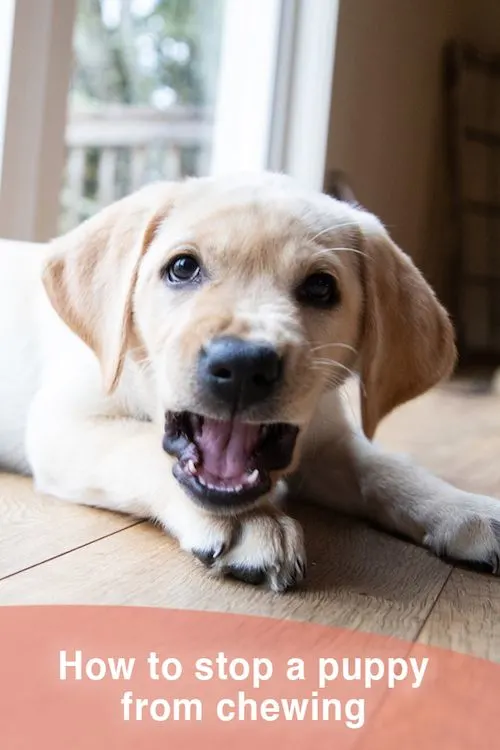
Puppies explore with their mouths
Puppies are curious and explore their surroundings with their mouths and their paws. They’re just as interested in chewing on one of your fingers as they are on a furniture leg or shoe. It’s simply fun for a puppy to chew and gnaw!
We’ll be showing you ways to redirect your puppy’s random chewing attacks to more proper ways to use his sharp puppy teeth.
That brings us to another reason why puppies chew on everything.
*If you just got a new puppy, download my free puppy training guide. Click Here
Puppies chew when they’re bored!
Teething puppies who are bored are probably the worst combination and will get into considerable chewing mischief unless redirected!
Bored puppies will find something to entertain themselves, and it’s usually something we won’t appreciate.
Things that come to mind are those expensive leather loafers, a wooden furniture leg, clothes, kids’ toys or electrical cords. The list is obviously endless.
The same concept applies to adult dogs, by the way. They can get bored too!
Adult dogs also need an outlet for their boredom. While bored puppies are usually only annoying, adult dogs who aren’t challenged mentally can represent a real danger to themselves and others.
For example, an adult dog might dig themselves out of their yard, just to mention one potentially dangerous situation.
*If you just got a new puppy, download my free puppy training guide. Click Here
How long does the puppy chewing stage last?
Puppies start their teething phase between 5 to 8 weeks of age. But this is only the beginning! The worst chewing stage typically lasts five to six months, and many young dogs continue to chew after that.
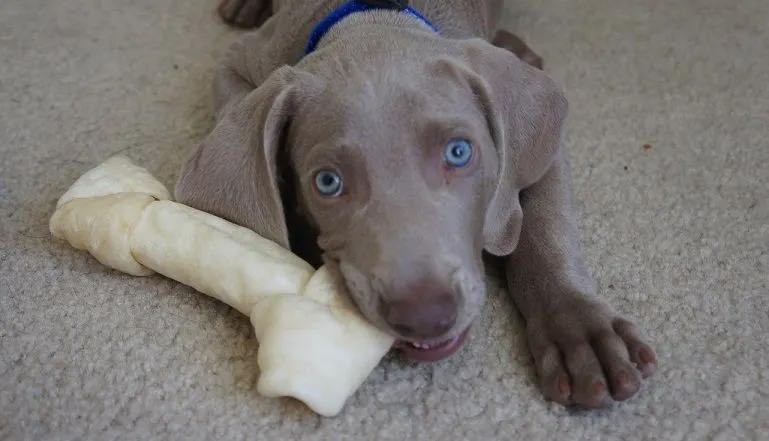
What is safe for a puppy to chew on?
Puppy teething toys
See our post: Which chews are best for puppies?
Our favorite puppy chews are filled, frozen KONG toys. Simply fill your puppy’s KONG toys with peanut butter, yogurt or his food, stick them into the freezer overnight, then offer to your puppy.
He’ll be busy entertaining himself for quite some time with his fun chew while soothing his sore gums with the cool food.
How to stop a puppy from chewing – 7 tips
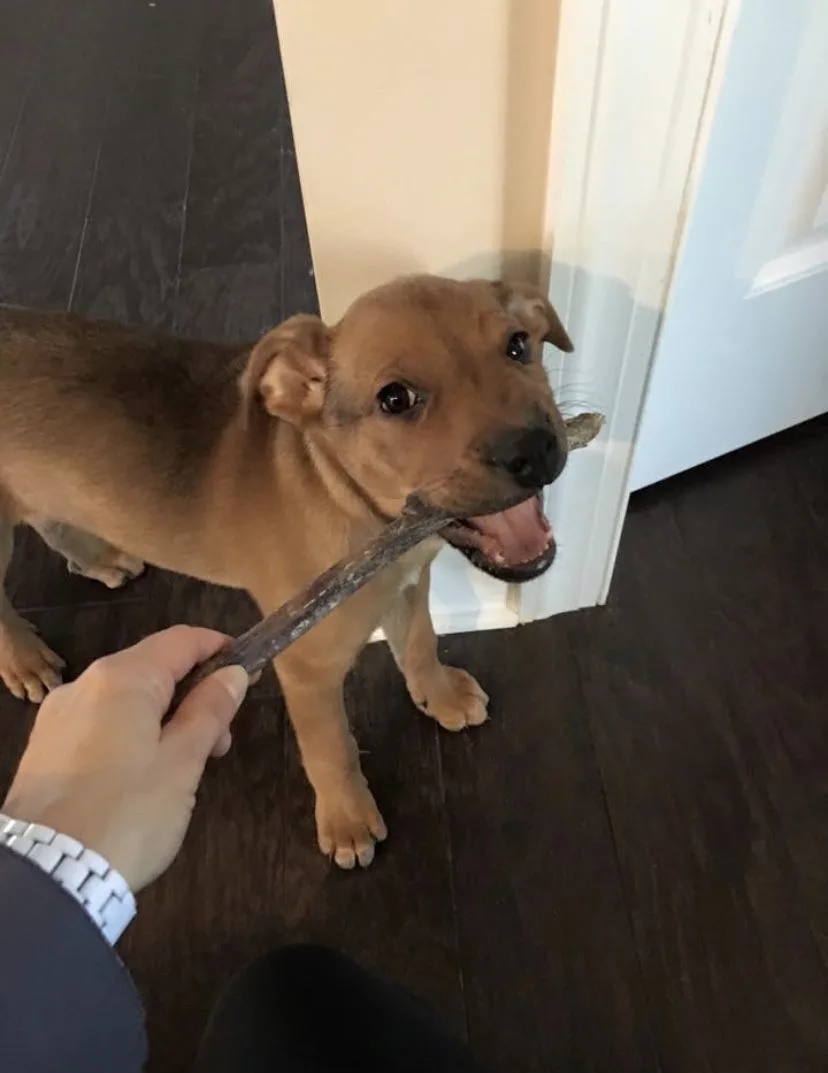
1. “Puppy proof” the room to prevent chewing
Lindsay tried to “puppy proof” her living room and home office the best she could by keeping items off the ground. These were the rooms her puppy Remy spent the most time in when he was not in his kennel.
Remy would grab stray socks, cups, pens or pretty much anything that happened to be on the floor! So Lindsay also made sure there were no chargers, head phone chords, etc., dangling at Remy’s eye level.
She kept all her shoes on a small shelf and after telling Remy “no” a few times, he understood shoes on the shelf were off limits.
She also knew not to trust Remy for more than 3 minutes or so unsupervised. Each pup is different.
*If you just got a new puppy, download my free puppy training guide. Click Here
2. Rotate toys to keep your puppy interested.
Offering a variety of toys helps to keep the puppy’s interest.
Lindsay kept 2 to 4 toys out for her foster puppy Lana at a time. Lana had about 5 favorite toys to chew and play with, so whenever she was not in her kennel, Lindsay chose a few toys to give her.
That way, if Lana tried to chew or grab something like the remote control or a sock, Lindsay would calmly say “no” and then offer Lana a rope toy or ball. “Good girl!”
You can also mix up the kinds of treats you use to stuff in Kongs and other treat-dispensing toys. One day it might be peanut butter and a biscuit the next it might be yogurt or a banana.
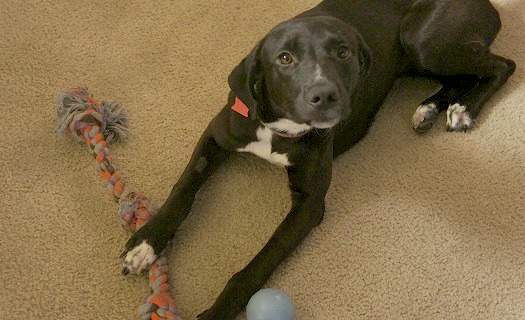
3. Provide different types of toys for teething puppies.
It helps if you know what types of toys your puppy likes to chew the most. Lana loved to chew on rubber Kong-type toys, balls and rope toys.
She didn’t care as much for plastic squeaky toys, and she didn’t get to have stuffed toys because she ruined them immediately!
Same goes with edible chews. Some puppies like to chew on Yak cheese dog chews or bully sticks while others might like Greenies or hooves.
4. Calmly say “no” when your puppy chews something inappropriate.
Rather than ignoring Lana for chewing something, Lindsay would calmly and firmly tell her “no” and then instantly offer her a toy and reward her.
Some trainers will tell you to just ignore unwanted behavior, which is a great idea for many scenarios. For chewing, we like to catch the puppy right before she has a chance to chew or right as she has the item and tell her “no.”
Look at this crazy dog:
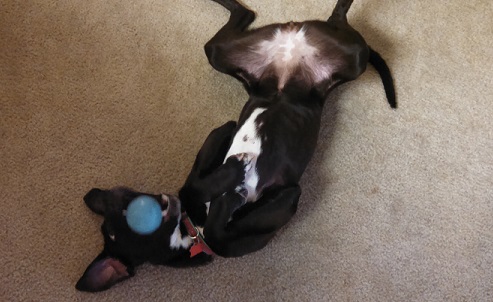
5. Use bitter apples spray to stop a puppy from chewing
If your puppy just can not seem to leave certain items alone such as a table leg, bitter apple spray is one tool to consider.
Bitter apple spray is just as it sounds. It’s a bad-tasting spray that will not harm your puppy but will hopefully stop her from chewing furniture, her leash, etc.
Some puppies don’t seem to even notice the spray, while it does work well for others.
*If you just got a new puppy, download my free puppy training guide. Click Here
6. Train your puppy to lie down and stay.
Teaching your puppy all the basic obedience commands like sit, down, stay and come will help her build more self-control overall.
The most helpful command when dealing with chewing is “stay.” That way, you can put your puppy in a down/stay, and she will stay there for at least short periods of time. Start with just a second or two, of course, and slowly work up to 30 seconds, 1 minute, 5 mins, etc.
7. Provide your teething puppy with lots of exercise!
Increasing your teething puppy’s exercise is not going to stop her from chewing, but it will decrease her energy overall which means she is more likely to relax and just lie down.
OK … sometimes it may seem like your puppy is never going to be tired, but increased exercise can only help. Make sure your puppy is getting time to run and play in an off-leash area if possible, and make sure to take her on long walks.
See my post on walking a puppy before she’s had her vaccinations.
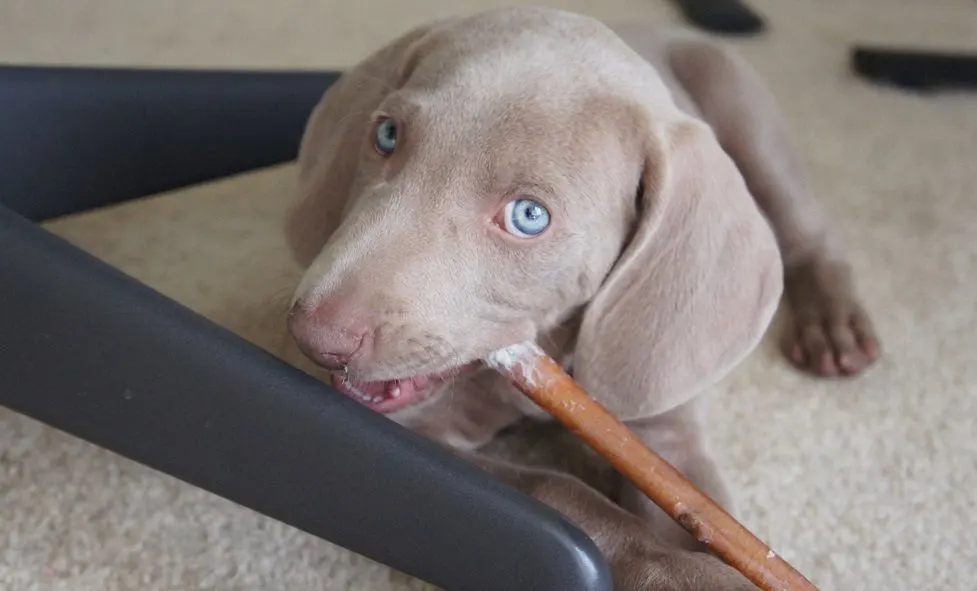
How to stop a puppy from chewing when left alone
Use a kennel or gated-off area when you can’t supervise.
When Lindsay couldn’t supervise Lana, she left her in her kennel. Even if Lana was left alone for 15 minutes while Lindsay took a shower, it was just easier to leave Lana in her kennel.
Leaving her alone for even 10 minutes would give her way too much time to chew something she shouldn’t.
We like to recommend a kennel (crate), but you could also try gating off a bathroom or kitchen area or perhaps using an exercise pen, which is a gate set up sort of like a toddler’s “play pen.”
When your puppy is alone, you want to leave her some tempting, appropriate items to chew on like a Kong toy. It also helps to provide exercise before you leave and again when you return.
How to stop a puppy from chewing shoes
Prevention is always our first approach when it comes to puppies chewing on items they’re not supposed to be chewing. That’s why our top three tips to stop a puppy from chewing shoes are:
1) Don’t leave shoes out and within the puppy’s reach
2) Offer your puppy an appropriate chewing alternative to shoes
3) Crate/kennel your puppy when you can’t actively watch her or keep her contained inside a play pen
If your puppy managed to sneak a shoe and you’re catching her chewing it, gently take the shoe away and offer your puppy something appropriate to chew on instead. This could be a dehydrated chew, a rubber toy, or a filled dog food puzzle.
Don’t make a huge deal out of it, but firmly say “NO” while your puppy chews on the shoe, then take it away from her.
This scenario would also be a good opportunity to introduce your puppy to the “leave it” command if she doesn’t know it yet. Say “leave it” the very moment she drops the shoe and goes for the appropriate chew (toy) instead.
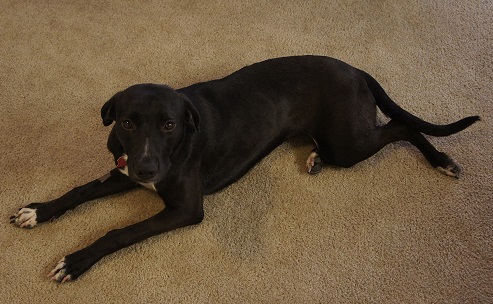
If you come home to chewed up shoes and your puppy is the obvious one to blame, don’t. She won’t be able to make the connection between the destroyed shoes and your anger.
Instead, blame yourself for having left the shoes out within your puppy’s reach and promise yourself it won’t happen again.
Remove the shoes, take your puppy out for a walk or some playtime, then offer her a puppy proof chew. You’d have to catch your puppy in the chewing act to make her understand why you’re upset because dogs live in the present.
*If you just got a new puppy, download my free puppy training guide. Click Here
How to stop a puppy from chewing and gnawing furniture
Furniture legs are particularly tempting for puppies to chew on because they’re typically made of wood, and which puppy doesn’t like a nice wooden stick to chew on?!
But all jokes aside, the same three concepts apply that we mentioned in the previous section How to stop a puppy from chewing shoes:
1) Don’t leave your puppy out within easy reach of the furniture
2) Offer your puppy an appropriate chewing alternative to furniture
3) Crate your puppy when you can’t actively watch her or keep her contained inside a play pen
If you catch your puppy in the act of chewing on your dining room table’s legs, give her a firm “NO.” Then, redirect her to an appropriate puppy chew (toy). You could also try the bitter apple spray approach or a similar chew deterrent and spray your furniture legs, fabric or door frames.
When do puppies lose their baby teeth?
Most puppies lose their sharp puppy teeth at around 12 weeks old. Puppies lose their baby teeth slowly over a couple of weeks.
You might notice a puppy tooth on the ground (they hurt to step on!). Or, you might never even see them as many puppies end up swallowing their baby teeth while eating or – surprise, surprise – while chewing!
From this point onward, their adult teeth will slowly start to come in.
They puppy will have his adult teeth by around six months old, but that does not mean the chewing stage is over!
*If you just got a new puppy, download my free puppy training guide. Click Here
Adult dogs also chew!
Young adult dogs as well as older dogs might continue to chew because:
- it’s an instinctual need
- chewing & gnawing exercises their jaws
- it engages them mentally
- relieves boredom
- some dogs are just naturally inclined to chew more than others
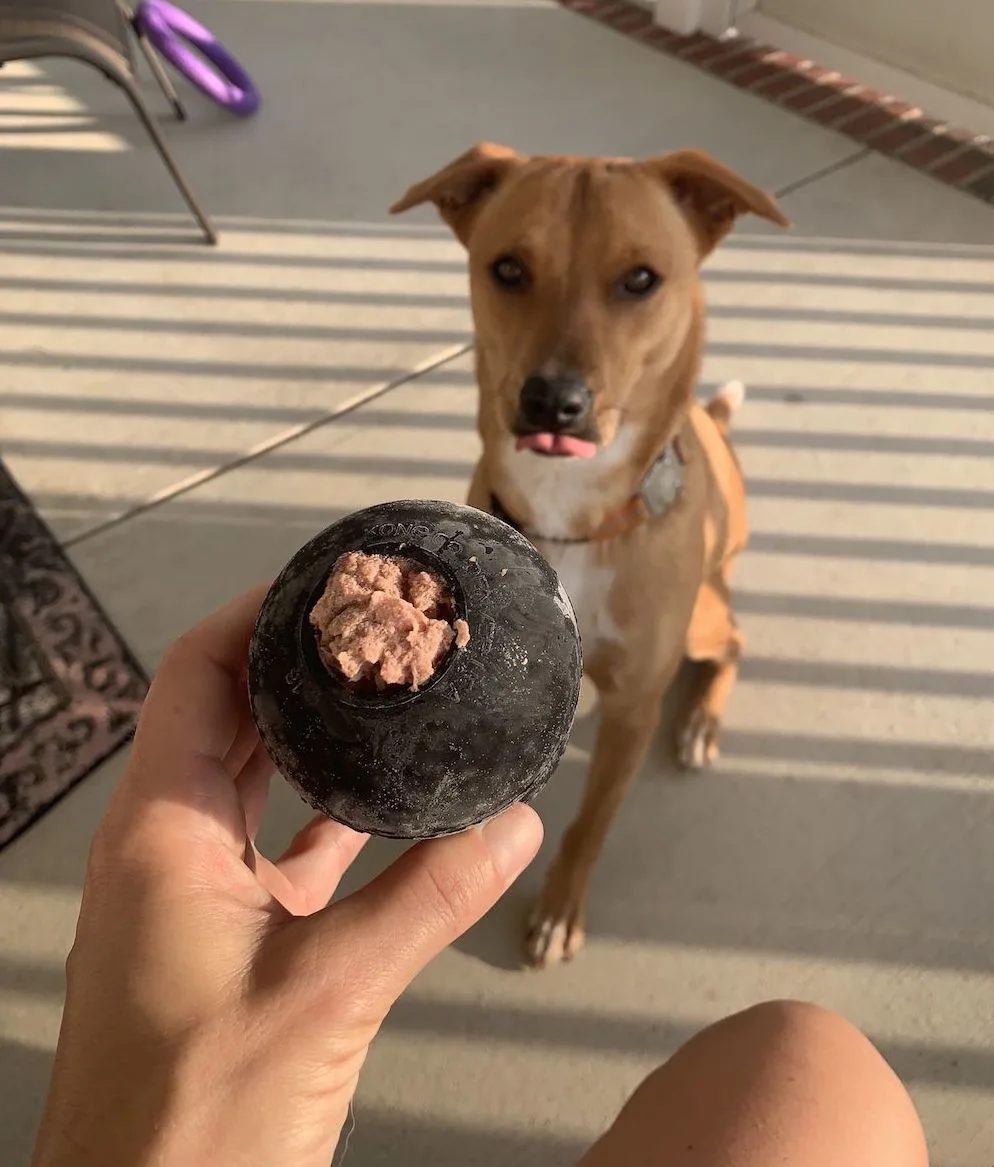
Barbara’s dog Wally was 1.5 years young when she adopted him, and she quickly noticed that Wally most definitely likes to chew!
He didn’t get into anything inappropriate because he had plenty of dog specific chewing options, but he did manage to destroy a puppy KONG toy Barbara had left over from her previous dogs.
Wally simply gave it a good bite one day and halved it, which resulted in him getting two Extreme KONG toys that he does great with. He has yet to destroy those, and it’s unlikely that he will.
Wally also LOVES shredding squeaky plush toys, which is why he simply no longer gets any. That’s with the exception of him kidnapping one every so often when Barbara takes him to pet retail stores!
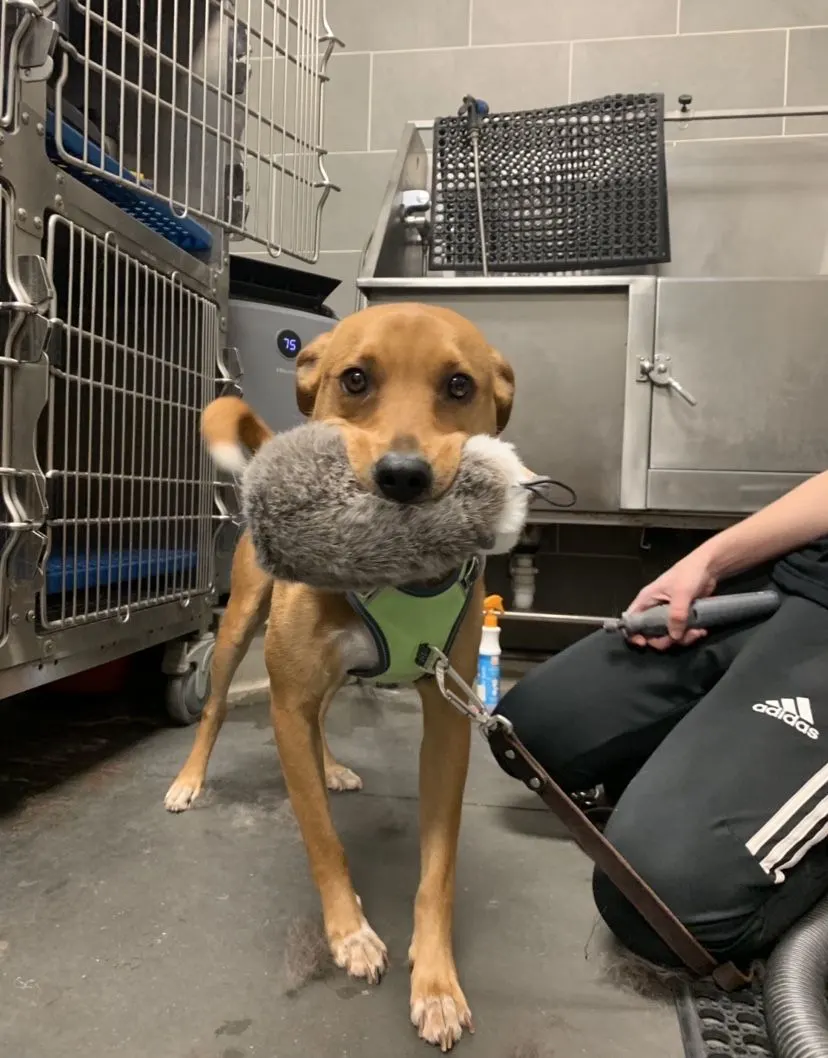
Raw bones for chewing
Wally eats raw dog food, and part of that diet are raw meaty bones. They’re safe to eat because they’re soft and pliable, and a dog’s acidic stomach is designed to break them down no problem.
Wally gets a lot of chewing satisfaction out of eating the raw meaty bones, and they’re a wonderful means of keeping his teeth clean and his jaws exercised.
For more information on how to safely feed your dog raw meaty bones, check out Barbara’s article How to safely feed your dog raw meaty bones.
Wally also gets recreational chews on a weekly basis, and a favorite are definitely dehydrated bully sticks. They last him about an hour to two, depending on how long and thick they are.
What tips do the rest of you have to stop a puppy from chewing?
Let us know in the comments!
*If you just got a new puppy, download my free puppy training guide. Click Here
Related blog posts
- How to train a puppy
- Stop a puppy from biting
- Stop a dog from mouthing your hands
- Puppy potty training
- When should you start training a puppy
- Why does my puppy go crazy at night?
- Dog and puppy crate training
Get all of That Mutt’s dog training tips HERE.
Barbara Rivers writes regularly for That Mutt. She is certified in raw dog food nutrition from Dogs Naturally Magazine and the author of three ebooks about balanced raw dog food. She is a blogger at K9s Over Coffee.

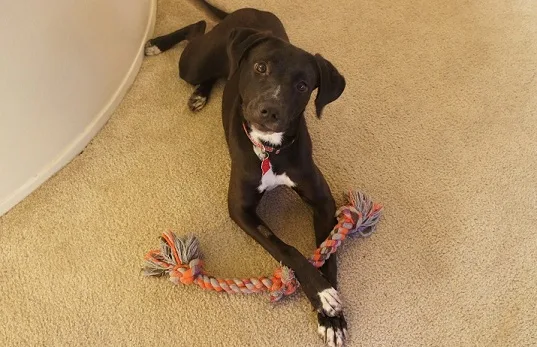
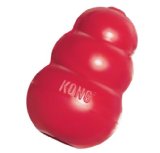
Sean
Tuesday 24th of February 2015
You can also stage what to chew and what not to chew by presenting controlled scenarios when your dog is on leash or tether. This works when the dog is not a resource guarder and will surrender objects to you (or you can remove them without any concern).
Present scenario. For example, 1 rope toy, 1 kong and 1 shoe. Praise and reward dog for taking the non-shoe item (special treats AND getting the item!). Correct (e.g., firm "No!") if dog chooses shoe. Take shoe away from dog. Replace with the thing they should have chosen (but no special treats).
The hard part of this is when your dog likes to chew inappropriate things that are harder to remove from them, particularly if they are small. Shoes are relatively easy to work with.
In general, I am not a fan of puppy proofing rigorously when you have an actual puppy (as opposed to a rehomed older dog). Young puppies can easily learn to distinguish between their toys and shoes/people items if they are firmly told not to touch these things from day 1. Sure, there is still management prevention in the future (I'd never leave a teething dog entirely alone with shoes on the floor). But most common people things become non-issues with the dog if you can start young enough. Otherwise, if you puppy proof so great that the dog never has a chance, you'll have to teach the same lesson (shoes are not for chewing) when the dog is older, faster than you, and can do more damage with chewing. This does not help at all with adolescent and adult dogs in foster or adoption scenarios, though.
Rachel @ My Two Pitties
Monday 23rd of February 2015
Lucky for me, neither of my dogs were destructive chewers. Except for one thing...the fence & handrails in my little yard. They loved that wood! Apart from telling them leave it & giving them something else to chew on if I caught them in the act, I would spray all the reachable areas with a mixture of cayenne pepper & water (the didn't mind bitter apple). It worked perfect! After a couple months I didn't need it anymore. :)
Jessicavy
Monday 23rd of February 2015
My favorite method is the whole saying no, then offering an appropriate chew toy instead. My dogs have been very good about not chewing things they shouldn't, although the most horrifying mishap we had during training was when Hiccup was young he got a hold of my reading glasses and chewed them up! He was lucky he didn't swallow any bits of metal or glass. Hiccup has been good since that incident, but finding chew toys for him remains frustrating. He (like you Lana) ruins stuffed toys right away, but he refuses to play with almost anything else!
Aisling
Monday 23rd of February 2015
You wouldn't think it but your first point is a very important one! I was constantly giving out to Chip eating everything (my shoes being the main thing). Then I said to myself one day, don't leave them there....and do you know what, it worked a charm!!!! Sometimes we really set our dogs up to fail!
Jana Rade
Monday 23rd of February 2015
When Cookie first came to us she'd chew everything in sight. Makes sense, given her background. I couldn't leave her for a minute without supervision unless she had something appropriate to chew on. It was a time of VERY quick showers (had to finish with my shower before she finished with her Kong). She learned fairly quickly, though. It's not about stopping a dog from chewing, it's about getting them to chew the right things.
Lindsay Stordahl
Monday 23rd of February 2015
Oh Cookie! Kong toys come in handy, don't they? Not sure what I'd do without a few of those.